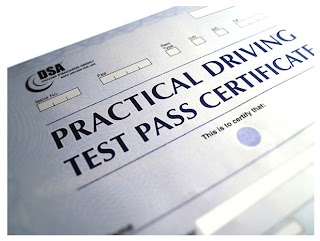The Driving Test And What to Expect
You have done all the hard work, all those hours of driving lessons East Ham, all the ups and downs has lead you finally to this important day, the day of the test. On the day of your practical test make sure you arrive for your practical test on time, may be even with some time to spare to give you a chance to take a breather before the test commences. Make sure you double check that you have all the correct documents with you before you leave your home as your test will not be conducted if you do not have them. You must also make sure the vehicle you are going to be using for the test, not just meets the requirements, but also fully insured to cover the practical driving test.
Documents for driving test
the documents you will need to bring with you are the following:
: Your provisional driving licence, you must bring both the counterpart and photocard ( counter part is the paper part that your photocard was attached to).
: If you have an old style driving licence without photocard, then you then you will need to bring with you the following documents.
: A valid passport ( does not have to be British) and your driving licence.
Please note, no other forms of ID is accepted.
If you have full driving licence that was issued in another country and is not eligible for exchange for a British licence,then you must apply for a provisional drivers licence.
The driving test vehicle
If you are not bringing your driving instructors vehicle to the test and bringing your own, then here is a check list:
: Make sure the car is legally roadworthy and has a current MOT test certificate if it needs one.
:The vehicle is mechanically in good working working order.
: All equipment fitted to the car is in good working order, such as speedometer must show mph.
: Fully covered by insurance to use during the test- the test examiner will ask you to sign a declaration form confirming that your insurance is in order.
: A valid tax disc must be displayed on the windscreen.
: Regulation L plates must be displayed to the front and the rear of the test vehicle.
: Seat belts must be fitted to the vehicle and in working order.
: Head restraints must be fitted to vehicle ( slip on head restraints are not permissible on driving test).
: If your vehicle has been subject to manufacturer recall, then you must have a certificate showing that the work has been carried out.
: You must ensure that the vehicle has a good clear view to the rear through the rear window and also fitted with an extra rear view mirror for the examiners use.
The driving test
While you wait in the waiting room for the examiner, try and relax - it is normal for pupils to be very nervous at this stage but you will be fine once the test begins. Your examiner will want you to do very well in your tet too and he will help you relax during your test by having a light conversation with you. The examiner may not say much as they do not want to distract you or make you lose your concentration while you drive. If you make a mistake, it is very important that you keep calm and relax for the rest of your test as you may make more faults if you lose concentration. Unless it is a serious or dangerous fault, you will not fail your test until you have done the same fault number of times. You will pass if you can show the examiner that you can drive safely and demonstrate to the examiner that you have the knowledge of the rules of Highway Code and theory of driving safely.
The test will last about 40 minutes and the route may include many different road and traffic conditions.
your examiner will give you directions clearly and in good time - if you do not understand, you can always ask. At the end of the driving test the examiner will asses any errors you have made and depending on how serious the error is, he will tell you whether you have passed or failed.
(How the driving test is assessed will be covered in another post)



No comments :
Post a Comment